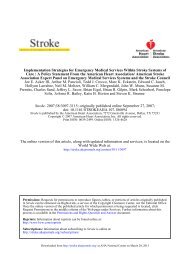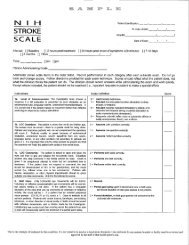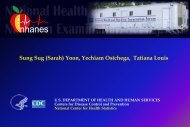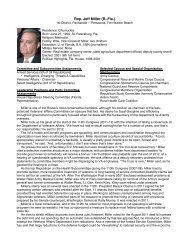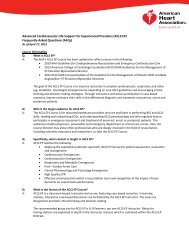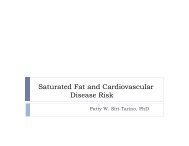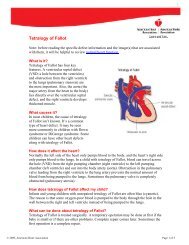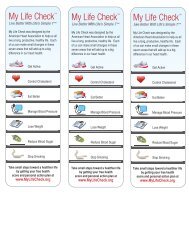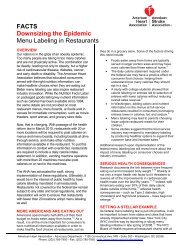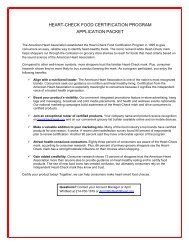Teacher's Resource Guide - American Heart Association
Teacher's Resource Guide - American Heart Association
Teacher's Resource Guide - American Heart Association
Create successful ePaper yourself
Turn your PDF publications into a flip-book with our unique Google optimized e-Paper software.
teacher’s <strong>Guide</strong><br />
Keep Your Health From Going Up in Smoke<br />
Smoking is the No. 1 cause of preventable death in the United States. Talking to students about the dangers of<br />
smoking can help them decide not to use tobacco products. Use the information below to guide your conversation.<br />
In the United States, tobacco kills more <strong>American</strong>s than car accidents, murder, AIDS, drugs<br />
and fires combined. Smoking cigarettes or using smokeless tobacco (also called dip, snuff<br />
or chew) is one of the worst things you can do to your body. Smoking damages nearly every<br />
organ in the body, including your heart, and causes heart disease and cancer.<br />
Smoking also causes some gross side effects, such as bad breath, stinky clothes, coughing,<br />
yellow teeth and difficulty breathing.<br />
Why is smoking so bad? Tobacco contains a chemical called nicotine that gives smokers a brief pleasant feeling. People<br />
get addicted to that good feeling. In addition to the nicotine, tobacco has lots of other poisonous chemicals in it. These<br />
toxic substances destroy your body over time, especially your heart and lungs.<br />
Some of the 4,000 chemicals found in cigarette smoke are also found in other familiar things:<br />
Acetone — nail polish remover<br />
Cadmium — batteries<br />
Hydrogen cyanide — rat poison<br />
Hydrazine — rocket fuel<br />
Urea — pee and sweat<br />
Toluene — gasoline<br />
Methanol — antifreeze<br />
The nicotine and other chemicals in cigarette smoke damage blood vessels and make it harder for the blood to move around<br />
the body. When blood doesn’t move around freely, your body doesn’t get as much oxygen as it needs. The chemicals in smoke<br />
also make your blood sticky and more likely to form a clot, which can result in a heart attack or stroke. Cigarette smoke can<br />
also keep your lungs from growing when you’re young, so it’s especially important for kids and teens not to smoke.<br />
Secondhand smoke is the smoke a person breathes from being around someone who is<br />
smoking. Some people think secondhand smoke isn’t dangerous, since they aren’t smoking.<br />
The truth is, secondhand smoke is harmful to your body. If you are around people who<br />
smoke, ask them not to smoke near you. Or try to move away from the smoke.<br />
Wrap up this activity with a few discussion questions:<br />
1. What can you do if someone offers you a cigarette?<br />
2. What is one reason why YOU don’t want to smoke cigarettes?<br />
DID YOU KNOW? Every<br />
6.5 seconds, someone in<br />
the world dies from a<br />
smoking-related disease.<br />
DID YOU KNOW? Cigarette<br />
smoking almost doubles a<br />
person’s risk for stroke.<br />
The <strong>American</strong> <strong>Heart</strong> <strong>Association</strong> offers free tips to quit<br />
smoking. Visit americanheart.org and type “smoking<br />
cessation” or “quit smoking” in the search box.<br />
9



